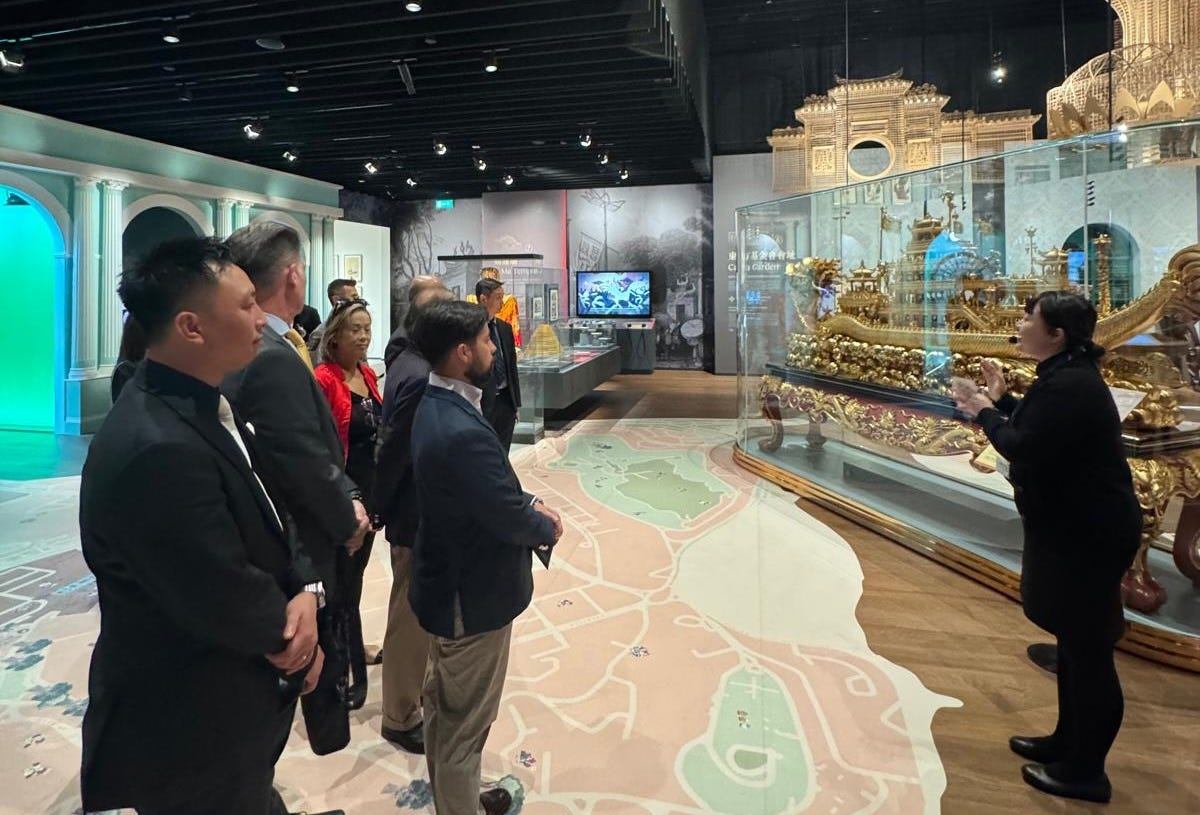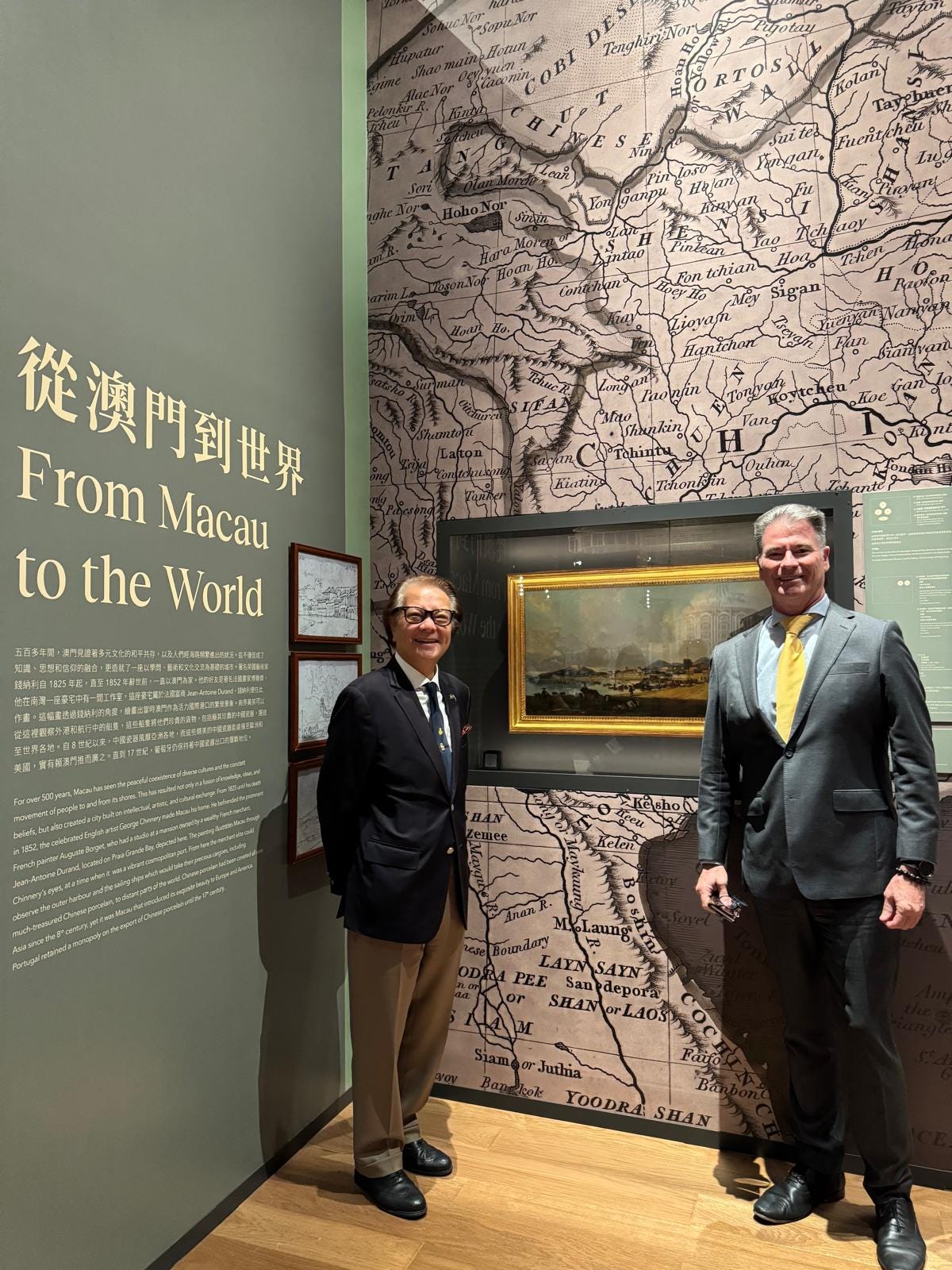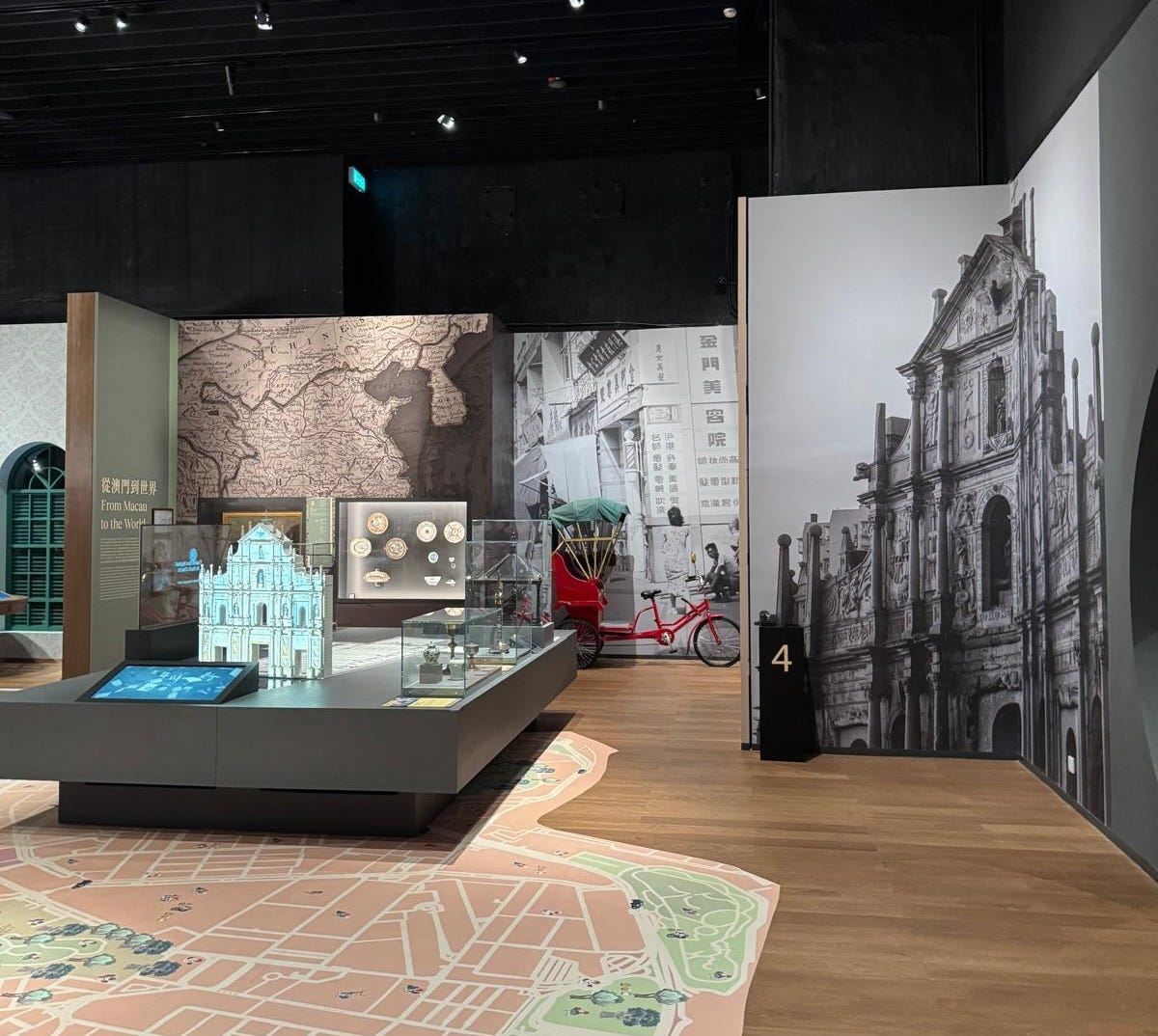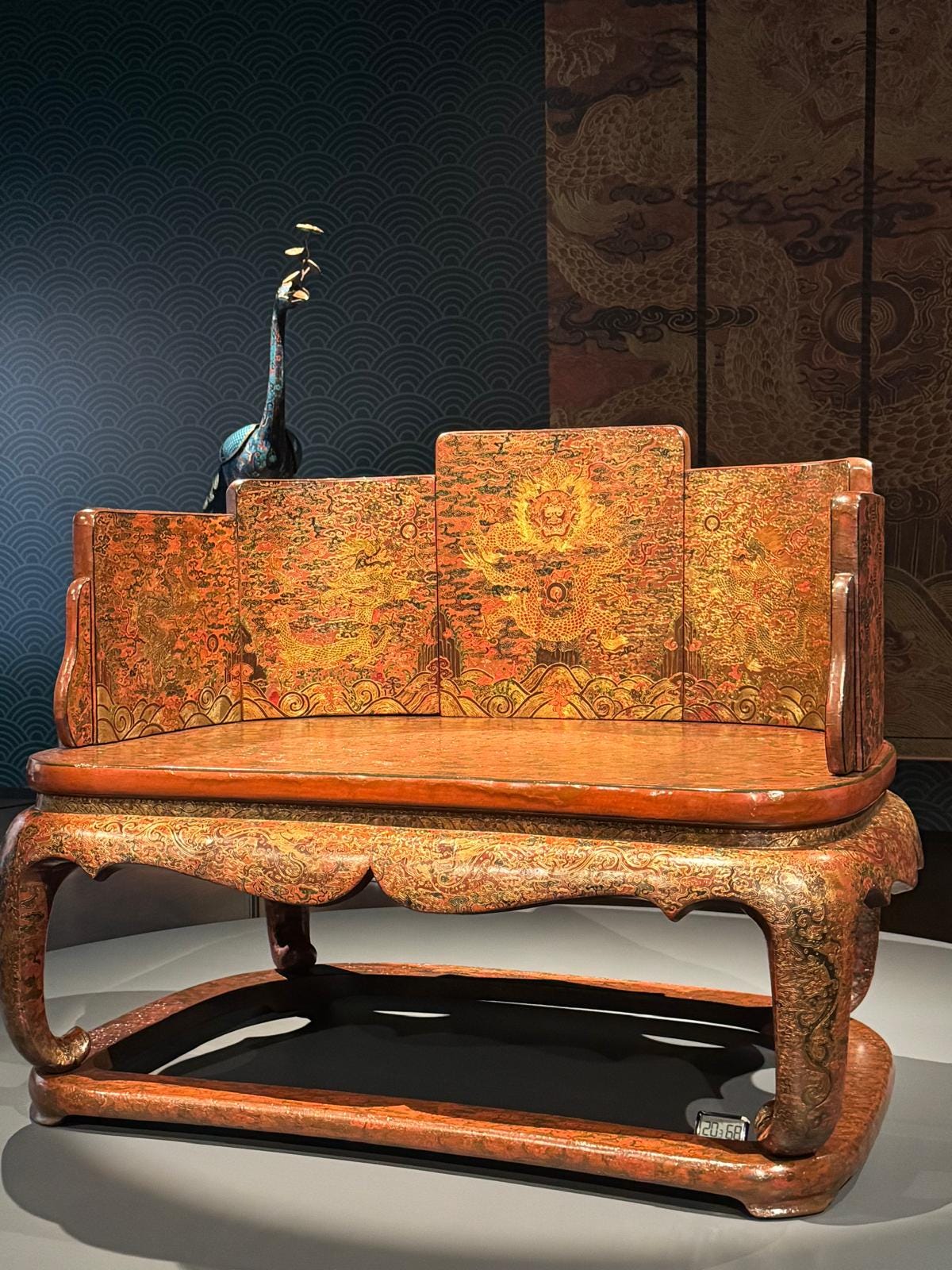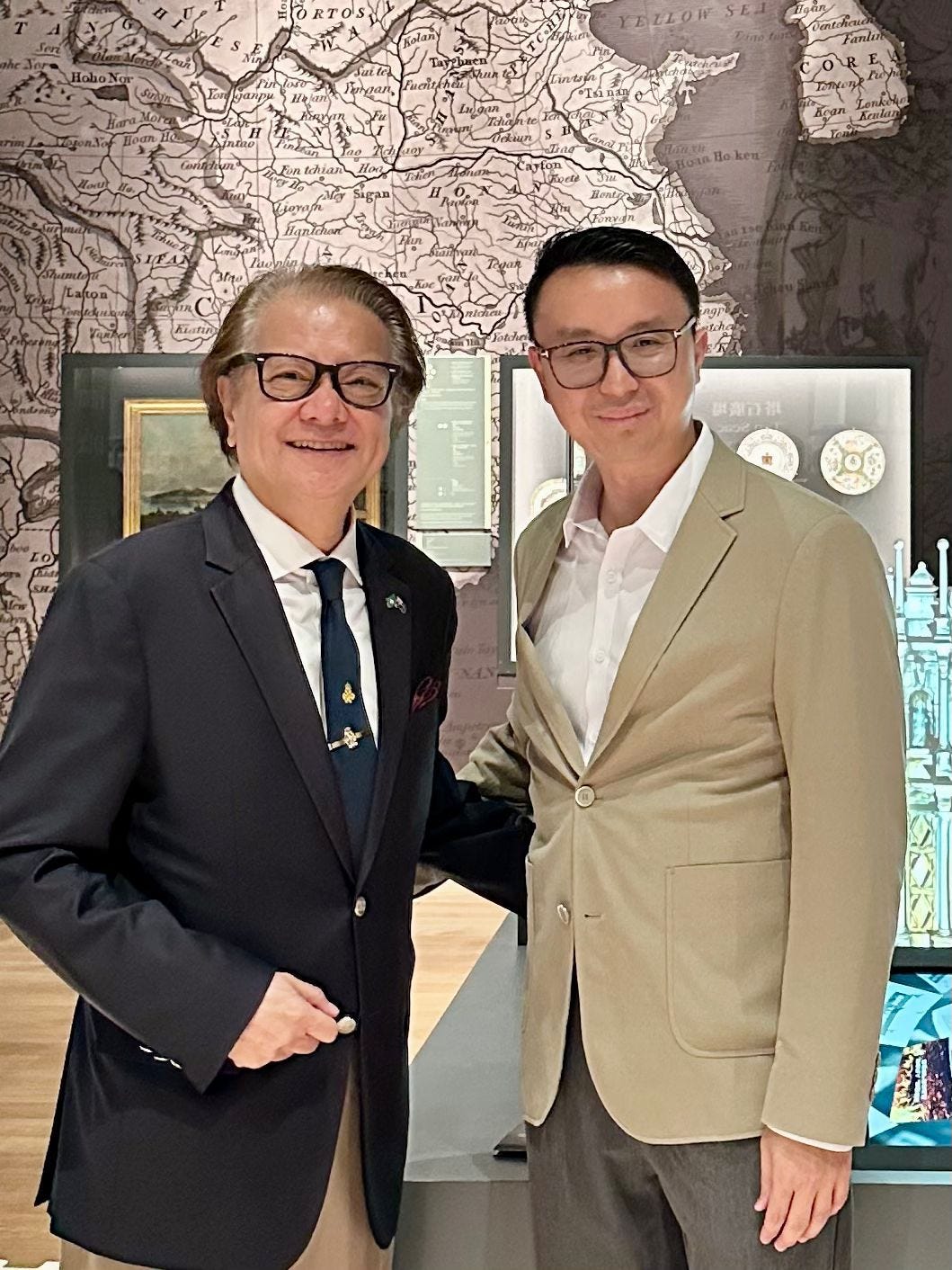China’s First Gateway: Grand Lisboa Palace’s Art Gallery celebrates Macau as a beacon of Sino-Portuguese heritage
Macau is where "China sees the world," and "the world sees China"
Last Thursday, the Art Gallery of the Grand Lisboa Palace, a popular and vibrant resort in Macau, threw open its doors to a private tour offered by Filipe Senne Fernandes (director of marketing relations at SJM Resorts). Alongside Dr. Billy Chan, chairman of AustCham Macau, Mr. Senne Fernandes took a group of friends through the inaugural exhibition of the Gallery. Titled “The Lisboa, Stories of Macau,” this exhibition serves as a vivid and attractive introduction to the heritage of the city that should be called China’s first international gateway.
The exhibit shows how Macau enjoyed a storied and noble history as a Portuguese-administered port and hub of Catholicism from 1557–1999: a completely unique story and trajectory in all of China. “The Lisboa: Stories of Macau” also looks back on the history of Macau through the eyes of various landmarks, including the old Casino Lisboa, which was built by Dr. Stanley Ho (1921–2020), himself an important figure in the business history of the city. There is one room filled with nostalgic installations of the memories, facilities, and highlights of the Casino Lisboa.
Notably, the Ho family, and mainly the founding patriarch Sir Robert Ho Tung (1862–1956), shared a bond with Macau, with Ho Tung having lived here during the difficult years of the Second World War (Macau, like Portugal, was neutral). The Grand Lisboa is the successor resort to the Casino.
Aside from the Casino Lisboa, the exhibit showcases other beloved landmarks of the city. There is the stately Casa Garden, which was built in 1770, it was home to several families of extraordinary foreigners. There is an animated, interactive program of the iconic St. Paul’s Cathedral, with the exhibit showcasing several artifacts from this great church built between 1602–40. There are also tributes to the famous Dom Pedro V Theatre, one of the first Western theaters in Asia, and the A-Ma Temple, which was built in 1488 (this Chinese temple gave Macau its name and maritime identity).

These landmarks come together to form an impression of Macau as a work of love. This was an intercultural, interethnic, and interreligious port built between the Lusophone world (then at its imperial height as the Portuguese Empire) and the Ming-Qing dynastic state.
There are also modern installations of important figures in Portuguese Macau’s history, including the famous watercolor and oil painter of China, George Chinnery (1774–1882). There is also a dedicated room housing the Lisboa Collection, which houses several priceless Qing-era court items like the Eggshell Porcelain Glazed Bowl with Coral Dragons Motif and the Spinach-green Dragon Jade Burner. The most valuable artifact is the centerpiece: the Filled-in Gold and Lacquered Dragon Throne, dated to the Kangxi Emperor’s (1654–1722) reign.
I came away from this exhibit several times wiser about the living significance of Macau as not just a city of fantastic entertainment and hotels, or of scrumptious global cuisine and extravagant merrymaking (a Turkish restaurant serving the most exquisite kofta has just opened at the Grand Lisboa, and we dined there after the tour).
We often speak of the United States as embodying an ideal of a multicultural melting pot. But Macau is the city where “China sees the world,” and “the world sees China.” It was where foreigners, led first by the Portuguese, encountered the Chinese world in the early modern period. It was a gift by the Ming emperor to the Portuguese monarchy as thanks for Portuguese armaments triumphing over coastal pirates. Macau evolved into a colony which was unheard of in world history, and which will never occur again.
Macau has retained many of its Old World charms while trailblazing a path as China’s most entertaining city (and I say this as a Hongkong-born person). From the Grand Prix to the Tennis Masters and so much more, Macau is a master of multiple and shifting identities, completely comfortable in its own skin and with the rapidly changing times. If anything, Macau embodies the best of China’s encounter with the world and vice versa, representing the loftiest ideals of friendship, fusion, and fraternity.




